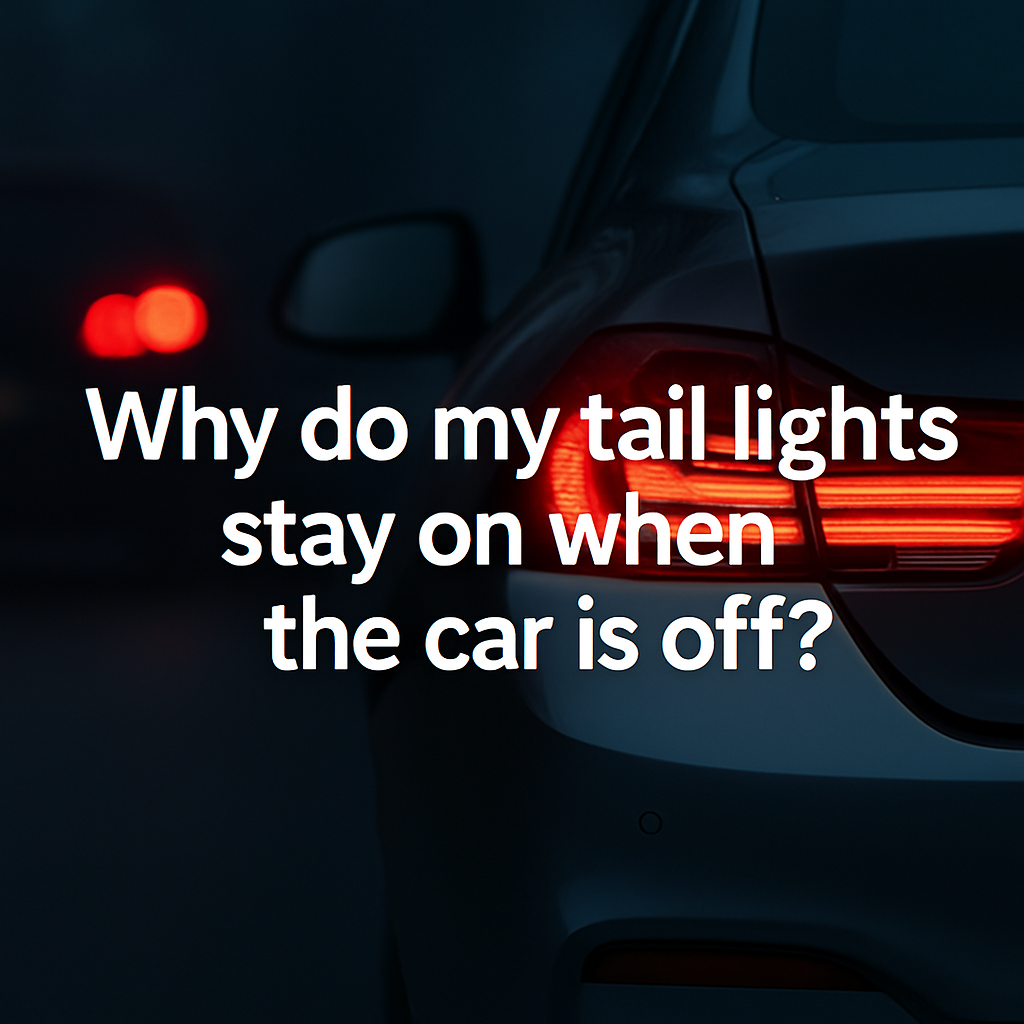It can be unsettling to walk away from your parked car only to notice the tail lights are still glowing, making you wonder if you've done something wrong or if there's an electrical problem. Why do my tail lights stay on when the car is off?
The most common reason tail lights stay on when a car is off is a faulty brake light switch, which can become stuck in the "on" position and continue sending power to the lights even when the car isn't running.
While a stuck brake light switch is the most likely culprit, there are actually several other potential causes that could be keeping your tail lights illuminated - from wiring issues to computer module problems. Understanding all the possible causes will help you diagnose the issue correctly and avoid unnecessary repair costs.
What Are The Other Reasons My Tail Lights Won't Turn Off?
Beyond a faulty brake light switch, several electrical issues could cause tail lights to remain on. A damaged or corroded wiring harness can create a short circuit that keeps power flowing to the lights. Similarly, a malfunctioning body control module (BCM) or electronic control unit (ECU) might fail to cut power to the lighting system when the car is turned off.
Another common culprit is a failing multifunction switch, which controls various electrical components including lights and wipers. When this switch wears out, it may not properly disconnect the tail light circuit when the car is turned off.
How Can I Tell Which Problem Is Causing My Tail Lights To Stay On?
Start by checking if the brake pedal feels different than usual - if it's softer or doesn't spring back normally, this points to a brake light switch issue. For other problems, look for patterns: if the lights stay on immediately after shutting off the car but eventually go out, this suggests a BCM timing issue.
You can also perform a simple test by disconnecting the brake light switch connector - if the lights go out, you've confirmed the switch is the problem. If the lights remain on, the issue likely lies elsewhere in the electrical system.
How Much Will It Cost To Fix Tail Lights That Stay On?
Repair costs vary significantly depending on the underlying cause. A brake light switch replacement typically costs between $85-$200, including labor. Wiring repairs can range from $150-$500 depending on the extent of damage and accessibility.
More complex issues involving the BCM or ECU can be considerably more expensive, potentially running from $500 to over $1,000. Given this wide range in potential costs, it's important to get an accurate diagnosis before proceeding with repairs, as fixing the wrong component could lead to unnecessary expenses.
How Long Can I Drive With Tail Lights That Won't Turn Off?
While you technically can continue driving with tail lights that won't turn off, it's not recommended for more than a few days. The constant power draw will drain your car's battery, potentially leaving you stranded. Most car batteries will completely discharge within 24-48 hours if the tail lights remain on continuously.
Additionally, continuously illuminated tail lights can burn out prematurely, leading to safety concerns and potential traffic violations. Many jurisdictions require all vehicle lights to be fully functional, and driving with an electrical problem could result in a citation.
Will This Problem Drain My Car Battery Even When Not Driving?
Yes, tail lights that stay on will drain your battery whether you're driving or not. A typical car battery provides 12 volts and has a capacity of 48 amp-hours. Standard tail lights draw about 3-5 amps per hour, meaning your battery could be completely drained in just 10-16 hours.
If you can't get the problem fixed immediately, consider disconnecting the battery when the car isn't in use. However, this is just a temporary solution and can be inconvenient, as you'll need to reconnect the battery each time you want to drive. Also, disconnecting the battery may reset various electronic systems in your car, including the radio presets and engine management computer.
Remember that repeatedly allowing your battery to drain completely can significantly shorten its lifespan, potentially leading to additional repair costs beyond fixing the tail light issue itself.
Take Action Before You're Stranded
Given the risk of a completely drained battery and the potential for more expensive repairs if the problem persists, the best course of action is to schedule an appointment with a qualified mechanic as soon as you notice your tail lights staying on. While you're waiting for your appointment, park your car where you can easily access the battery terminals in case you need to disconnect them, and keep a set of jumper cables in your vehicle just in case.
Looking for high-quality emergency vehicle lighting? Contact Ultra Bright Lightz for your vehicle lighting needs.


